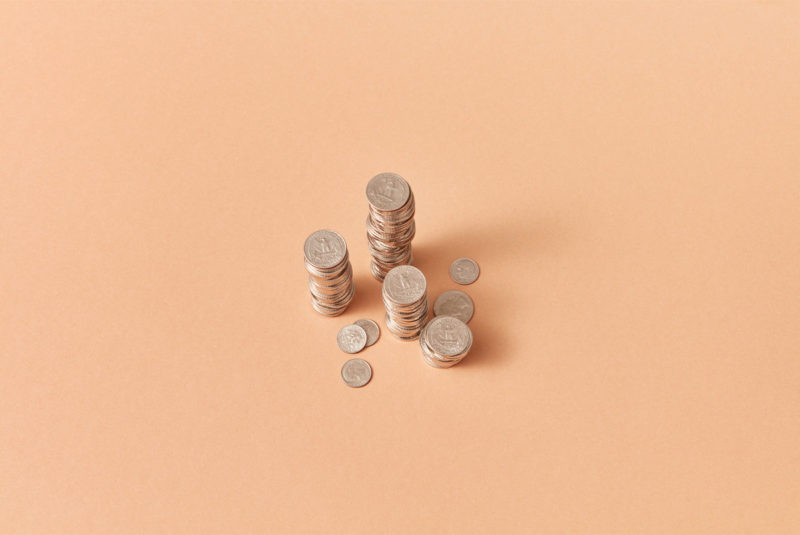Federal student loans are one of the most accessible ways to fund an education. But that doesn’t mean making those monthly payments after graduation will be easy.
It’s important to stay on top of your payments because even a single missed payment can hurt your credit score. This can make it harder for future you to borrow money for all the things that make adulting worth it.
What’s more, if you miss multiple payments in a row, it could put your student loan into default. Being in default is even worse for your credit because it can stay on your credit report for years. The good news is that it’s possible to get out of default without lasting harm to your credit.
To find out what student loan default is, how to avoid it and what to do if you find yourself in default, read on.
What Does Student Loan Default Mean?
The first thing to know is that your loans won’t go into default right away. First, a payment is considered missed if it’s 30 days late and could eventually show up on your credit report.[1] Also, if you use one payment to cover multiple student loans (this is usually the case with federal student loans), that can cause multiple late payments to show up on your statement all at once.
For federal student loans:
- After 90 days, your account will be considered delinquent. Your lender can report you to the three credit bureaus, which can lower your credit score,[2] but if you pay your balance back, you’ll be able to get back on track pretty quickly.
- If your loan payment is 270 days (roughly 9 months late), you would then go into default.[2]
Keep in mind, private loan servicers may have different criteria for when a loan is considered to be in default.
Being in default means the lender can take more aggressive steps to collect what you owe them. These steps can include:
- Acceleration: Your entire loan balance, including interest, becomes immediately due.
- Collections: Your loan goes to a collections agency that might aggressively try to collect the past due balance.
- Loss of loan benefits: You cannot apply for deferral or forbearance (which are types of payment pauses) and may not qualify for federal loan forgiveness programs.
- Income withheld: Your wages may be garnished to cover your debt. For federal student loans, the Department of Education can order an employer to withhold up to 15% of your pre-tax wages. Your income tax refund or Social Security payments may also be garnished and applied to the debt.[3]
- Legal action: Your lender can file a legal action against you for both the balance of the loan and the lender’s legal fees. Meanwhile, having a legal action against you can block your ability to sell an asset like a home or investment property.
Whether you’re delinquent or in default, the nonpayment will stay on your credit report for up to 7 years. So if you’ve missed a payment (or a few payments), it’s a good idea to call your student loan servicer sooner rather than later.
How Can I Get My Student Loans Out of Default?
For your federal student loans, there are three key options available that you can use to get out of default: rehabilitation, consolidation or cancellation.
Rehabilitation
Loan rehabilitation is a bit like a do-over for your credit. Rehabilitation is only available for your federal student loans, specifically Direct loans and Federal Family Education loans.
To start, you’ll need to contact your student loan servicer to confirm what loans you have, how much you owe and the status of your loan. You can do this through the Department of Education’s Federal Student Aid website.
You agree to make a certain number of payments (9 in 10 consecutive months) and once you’ve done that, the default is removed from your credit report. Once that happens, you can continue to pay off your loan as you were doing before.
To determine how much you’ll need to pay each month, you’ll need to:[4]
- Determine your annual discretionary income: To determine your annual discretionary income take your adjusted gross income (AGI), which is your total earnings from your salary, dividends, capital gains, business income and retirement distributions minus student loan interest, alimony payments or contributions to a retirement account. You can also find this on your tax return.
Then subtract 150% of the federal poverty guideline, which is based on where you live and your family size. Just note, you count as a family of one.
For 2022, 150% of the federal poverty rate for the 48 contiguous states (not including Alaska or Hawaii) is:[5]
| Family Size | 150% of Federal Poverty Rate |
| 1 | $20,385 |
| 2 | $27,465 |
| 3 | $34,545 |
| 4 | $41,625 |
| 5 | $48,705 |
| 6 | $55,785 |
| 7 | $62,865 |
| 8 | $69,945 |
- Take 15% of your discretionary income and divide it by 12: If your AGI is $45,000 and you are single, your discretionary income would be $24,615. Fifteen percent of that is $3,692. Divide that by 12, and you’d need to pay $308 a month for 9 months.
A few things you need to know about student loan rehabilitation:
- Pay on time: Because the payments are based on your income, they’re designed to be affordable. Just remember, each payment must be made within 20 days of the due date.
- Your partner’s income counts: if you’re married and file jointly, your partner’s income would also count toward your total AGI.
- You can only do it once: Student loan rehabilitation is only available once during your student loan repayment period. If you take advantage of it and reenter default, you’ll need to find another solution.
Consolidation
If you’re having trouble making your student loan payments, a Direct consolidation loan lets you combine multiple federal education loans into one loan.
This can help lower your interest and potentially lower the amount you pay each month. You may also be able to extend your repayment period by up to 30 years,[6] so you have more time to pay, which can also lower your monthly payment.
Once you’ve consolidated your loans, you can also take advantage of other programs like income-driven repayment plans or public service loan forgiveness programs.
The good news about federal loan consolidation is that you can do it at no cost to yourself.
You can apply online through the Department of Education’s loan consolidation website.
Another option is to consolidate your federal student loans into a private student loan. If you have excellent credit this could help you lower your monthly payments, but you won’t be able to take advantage of any of the federal income-driven repayment or loan forgiveness programs.
Once they’re private student loans, they can’t be federal loans again.
Cancellation
While it’s unlikely, there are times when the federal government will discharge or cancel all or part of your student loan debt. This is not the same as loan forgiveness. Loan cancellation usually only happens in specific situations where the school you attend is at fault, or the government decides that it would be impossible for you to repay your loans.
- School closure: Hopefully your school will continue to thrive long after you finish your studies. But if your school closes before you’re able to complete your program or between 120 – 180 days after you withdraw, you can apply to have your loan 100% canceled.[7]
- False certification: When you apply for a student loan, the school you attend is required to certify that you will benefit from the education they provide, that you are eligible to receive the loan and that you authorized them to receive student loan payments in your name. If the school failed to do this, you can apply for a loan discharge.
- Unpaid refund: If you left school early, the school may have been required to give you a refund on your tuition. If they failed to do that, you may be eligible for your loan to be discharged for the amount they were supposed to refund.
- Death: If you die before you’re able to pay back your student loan, it won’t be your problem anymore, but it means that your family must apply to have your loan discharged so the burden of repaying it won’t fall on them. If a parent borrows money on your behalf and they die, you can also apply to have the loan discharged.
- Total permanent disability: If you become physically or mentally disabled, you may qualify for a loan discharge. To qualify, you need to provide proof that you have a “total and permanent disability,” usually from the Department of Veterans Affairs, the Social Security Administration or your physician.
- Perkins loan cancellation: While the federal Perkins loan has been phased out, you may be eligible to have your existing loan canceled if you are a teacher working with lower-income or disabled students or working as a teacher in a state with a declared teacher shortage in specializations like math, science or foreign languages.
Getting your loans canceled won’t happen on its own. If you think you qualify for rehabilitation, consolidation or cancellation, you’ll need to apply through your student loan servicer or the school where you took out the loan. You’ll also need to provide proof backing up your claim.
If you are successful, your student loan debt will be immediately removed from your credit report, including any negative marks caused by defaulting on your loan.
Pay off your loan
The other option when your loan goes into default is to simply pay it off in full. Of course, if you’re having trouble making your loan payments, you probably won’t have enough money to pay off your loan balance.
But if you suddenly come into a large sum of money, using it to pay off your student loans could help you to avoid defaulting and help improve your credit in the future.
How Can I Avoid Defaulting Again?
If your loan is in default or you’re afraid that you’re close to being in default, there are solutions available that can help you manage your student loans without hurting your credit.
Enroll in an income-driven repayment plan
Income-driven repayment plans lower your student loan payments based on your income. Under these plans, you agree to pay 10% – 20% of your discretionary income for 20 – 25 years. After that, the loan is forgiven. The income limit and longer repayment period can help make your loans more affordable, but you may pay more in interest in the long run.
These plans are easy to apply for, but you may need to consolidate your student loans to be eligible. Also, you’ll need to reapply every year.
Track your payments online
Most student loan service providers offer online portals that let you keep an eye on your student loan balances. They may even allow you to set up automated reminders that send you a text or email when a payment is due, so you don’t risk missing a payment.
Set up automatic payments
Setting up an automatic payment either through your loan servicer or your bank can help you stay on track with your student loan payment with less effort. You can even select which day of the month you want your student loan payment to be due so you can time it to when you get paid or when you know you’ll have the funds available.
Talk with your loan servicer early
While loan servicers aren’t always your friend, they don’t want you to default. After all, they can’t repossess your education like they would a home or auto loan. So, if you feel like you’re going to have trouble making your loan payments, call them sooner rather than later.
They may be able to help you with a deferment or forbearance plan or help you adjust your loan terms so that you can continue to make your payments and keep your credit in good standing.
There Are Ways To Get Out of Default
Ideally, the best way to get out of student loan default is to not get into default in the first place. Staying on top of your payments and communicating with your student loan servicer can help, even if you’re having trouble making your payments.
But if you do find yourself in default, it’s not the end of the world. Again, the answer is to communicate with your student loan servicer to find the best solution for you and your credit score.
The Short Version
- For your federal student loans, there are three key options available that you can use to get out of default: rehabilitation, consolidation or cancellation
- Once you’ve consolidated your loans, you can also take advantage of other programs like income-driven repayment plans or public service loan forgiveness programs
- Whether you’re delinquent or in default, nonpayments will stay on your credit report for up to 7 years
Experian™. “What Happens If You Default on Student Loans.” Retrieved May 2022 from https://www.experian.com/blogs/ask-experian/what-happens-if-you-default-on-student-loans/
Federal Student Aid. “Student Loan Delinquency and Default.” Retrieved May 2022 from https://studentaid.gov/manage-loans/default
Federal Student Aid. “What is wage garnishment?” Retrieved May 2022 from https://studentaid.gov/help-center/answers/article/what-is-wage-garnishment
Federal Student Aid. “Getting Out of Default.” Retrieved May 2022 from https://studentaid.gov/manage-loans/default/get-out
U.S. Department of Health and Human Services. “ASPE – Poverty Guidelines 2022.” Retrieved May 2022 from https://aspe.hhs.gov/topics/poverty-economic-mobility/poverty-guidelines
Federal Student Aid. “Student Loan Consolidation.” Retrieved May 2022 from https://studentaid.gov/manage-loans/consolidation
Federal Student Aid. “Closed School Discharge.” Retrieved May 2022 from https://studentaid.gov/manage-loans/forgiveness-cancellation/closed-school




